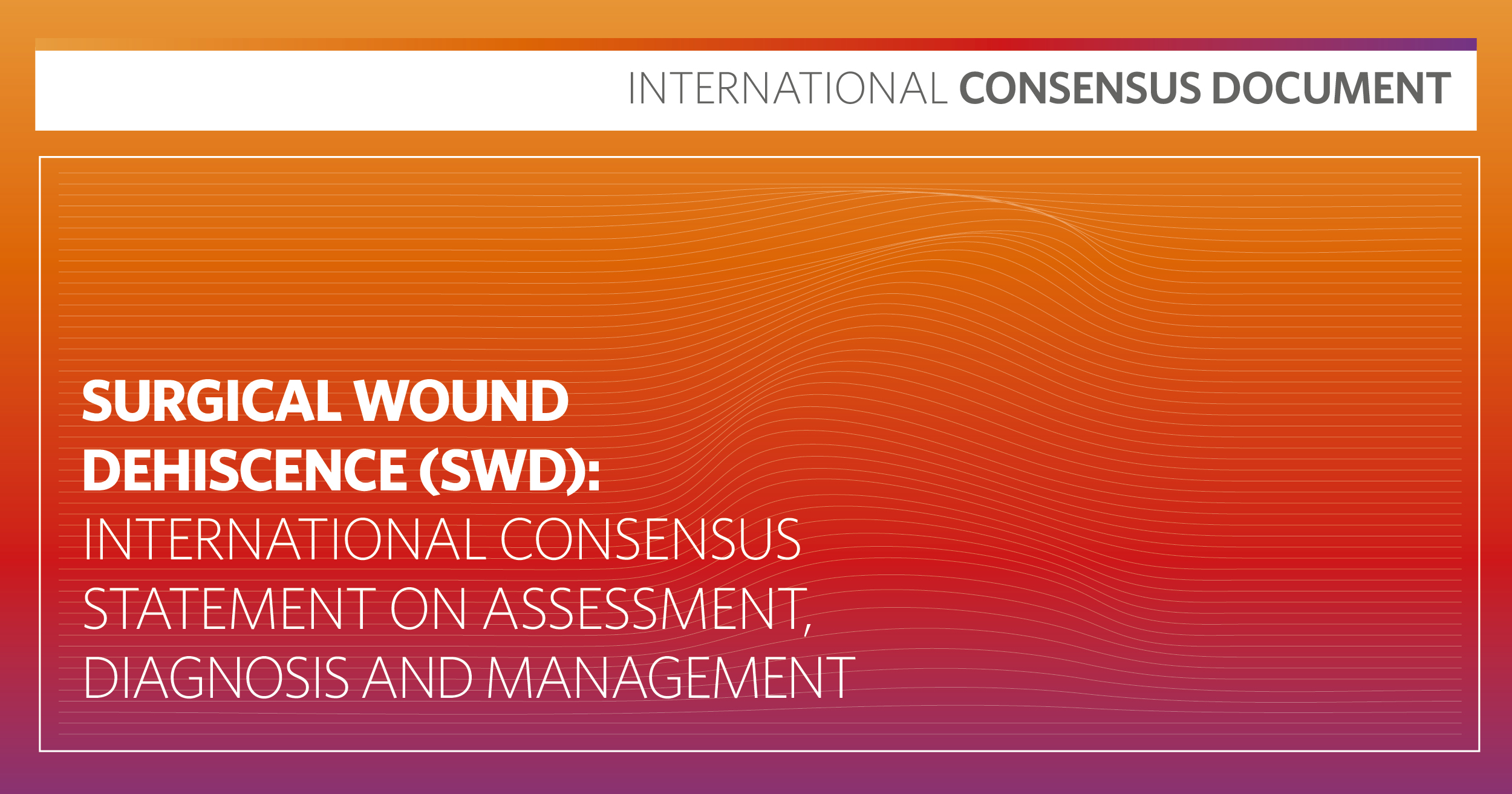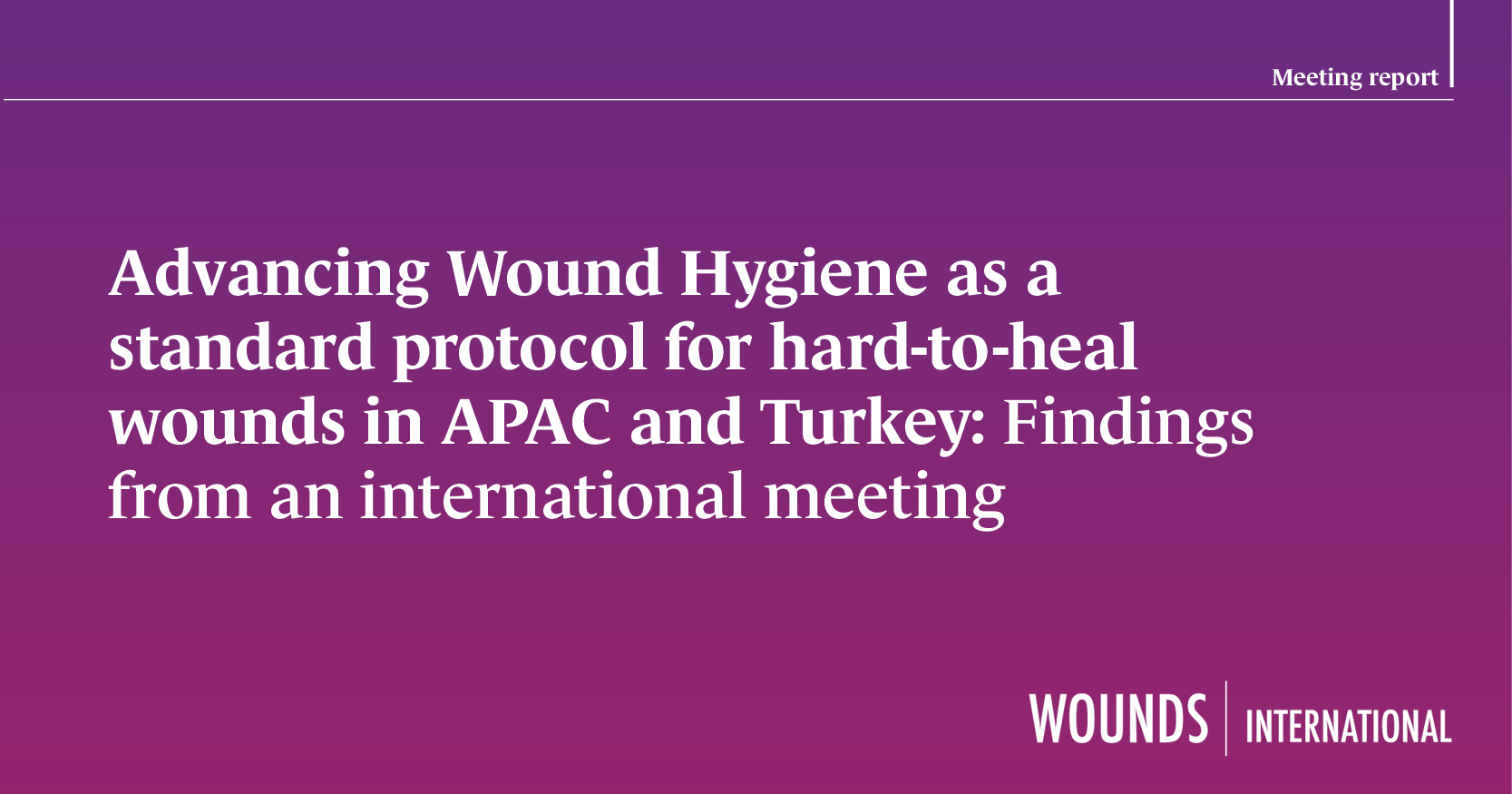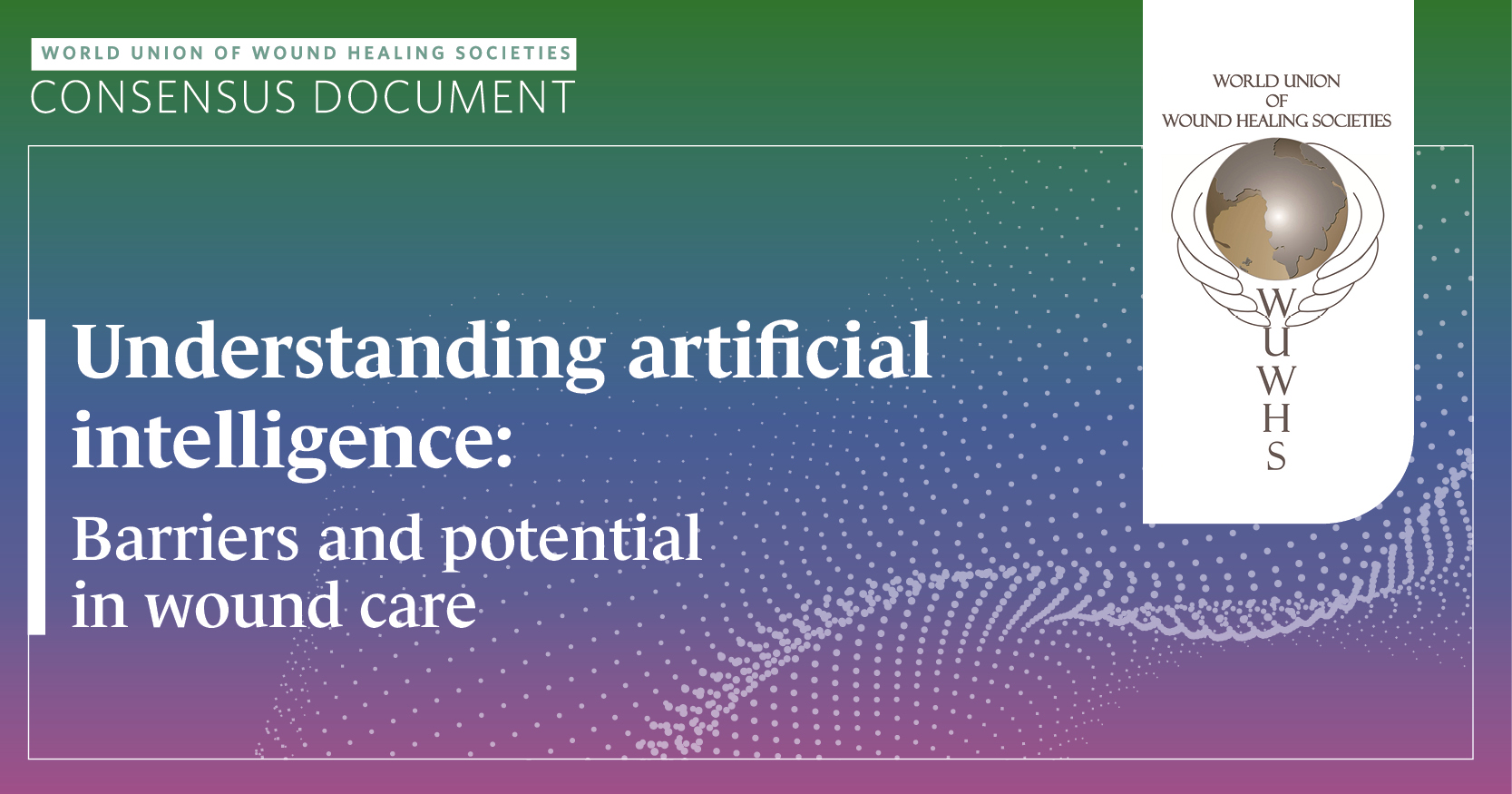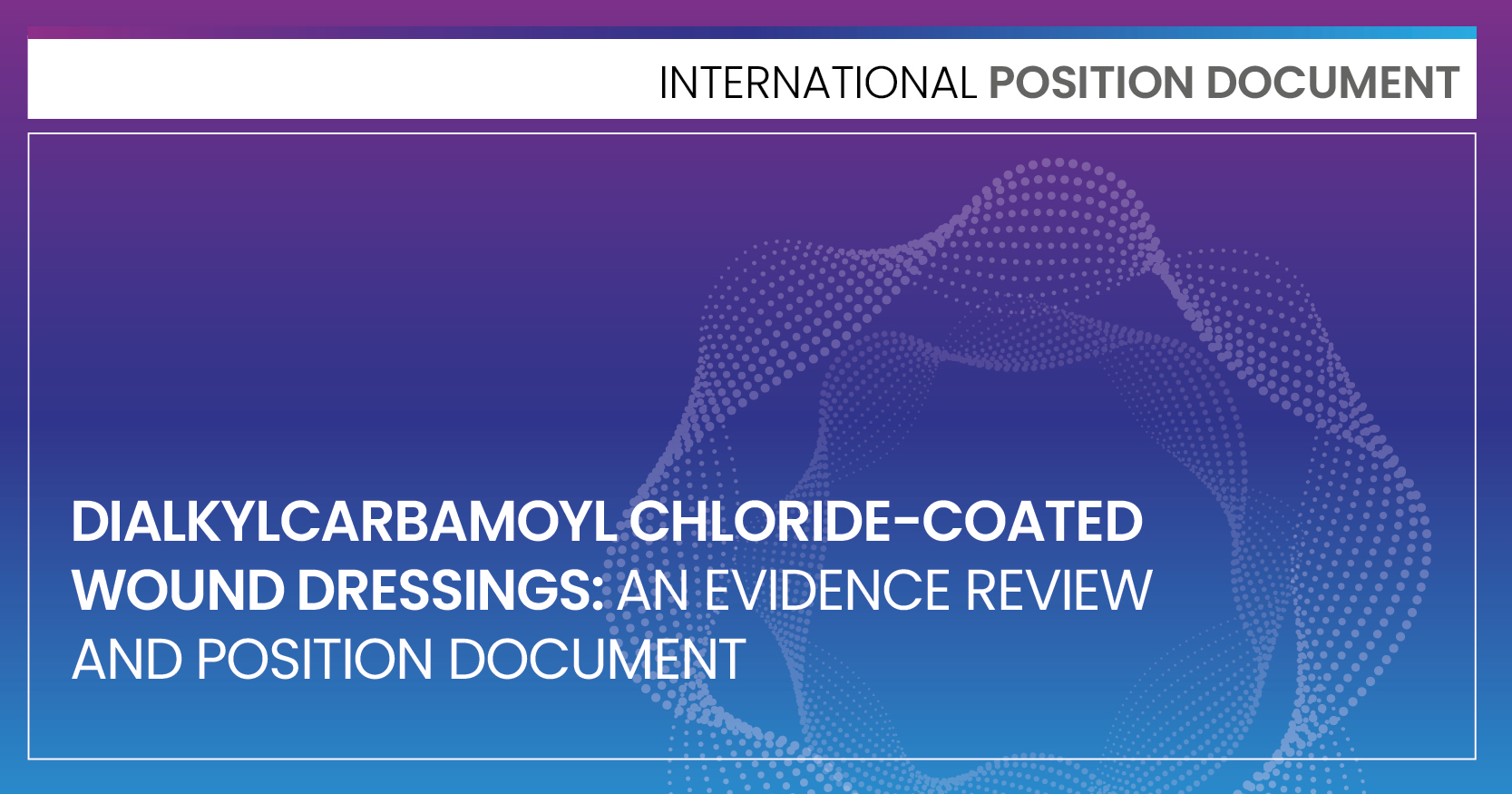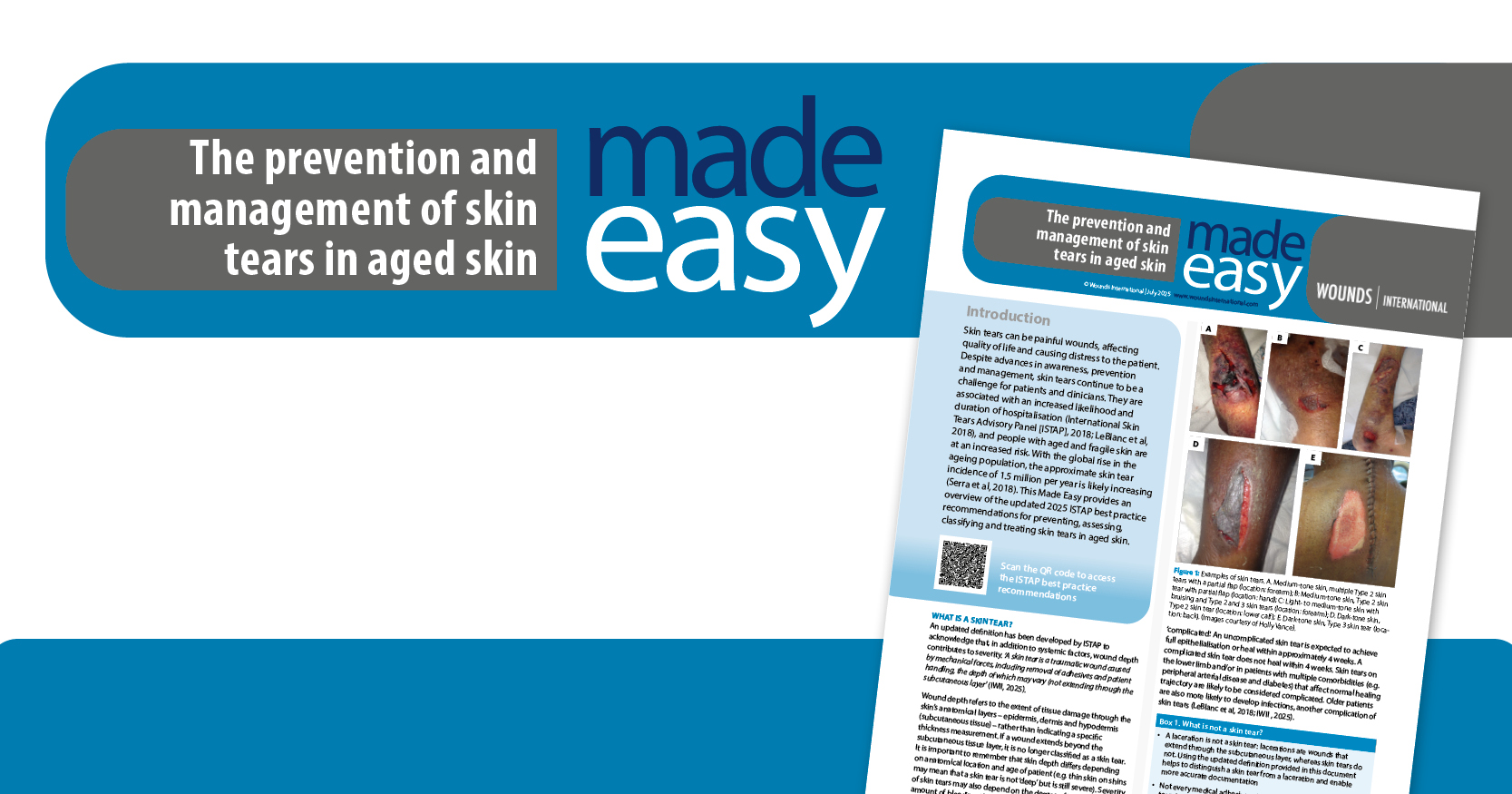ReferencesAllegranzi B, Bagheri Nejad S et al (2011) Burden of endemic health-care-associated infection in developing countries: systematic review and meta-analysis. Lancet 377(9761): 228-41
Australian Wound Management Association (2011) Position document: Bacterial Impact on Wound Healing: From Contamination to Infection. Available at: https://tinyurl.com/3asr74td (accessed 08.01.2024)
Bailey IS, Karran SE, Toyn K et al (1992) Community surveillance of complications after hernia surgery. BMJ 304(6825): 469-71
Beecher SM, O’Leary DP, McLaughlin R et al (2016) Influence of complications following immediate breast reconstruction on breast cancer recurrence rates. Br J Surg 103: 391–398
Biccard BM, Madiba TE, Kluyts HL et al (2018) African Surgical Outcomes Study (ASOS) investigators. Perioperative patient outcomes in the African Surgical Outcomes Study: a 7-day prospective observational cohort study. Lancet 391(10130): 1589-98
Blakey EP, Jackson D, Walthall H, Aveyard H (2017) What is the experience of being readmitted to hospital for people 65 years and over? A review of the literature. Contemp Nurse 53(6): 698-712
Bongers BC, Dejong CHC, den Dulk M (2021) Enhanced recovery after surgery programmes in older patients undergoing hepatopancreatobiliary surgery: what benefits might prehabilitation have? Eur J Surg Oncol 47(3 Pt A): 551-9
Braithwaite J, Herkes J, Ludlow K et al (2017) Association between organisational and workplace cultures, and patient outcomes: systematic review. BMJ Open 7(11): e017708
Brindle T, Farmer P (2019) Undisturbed wound healing: A narrative review of literature and clinical considerations. Wounds International 10(2): 40-8
Builders PF, Builders MI (2016) Wound Care: Traditional African Medicine Approach. Worldwide Wound Healing – Innovation in Natural and Conventional Methods. InTech. Available at: https://www.intechopen.com/chapters/53204 (accessed: 29.01.2024).
Campbell LM, Amin NN (2014) A qualitative study: potential benefits and challenges of traditional healers in providing aspects of palliative care in rural South Africa. Rural Remote Health 14: 2378
Carli F, Gillis C, Scheede-Bergdahl C (2017) Promoting a culture of prehabilitation for the surgical cancer patient. Acta Oncol 56: 128e33
Carville K, Alan J, Smith J (2022) Best practice, best products, best outcomes in community wound care: three descriptive cohorts. Wound Practice and Research 30: 196-206
Centers for Disease Control and Prevention (2024) Surgical Site Infection (SSI) event. Available at: https://tinyurl.com/2vkm2t78 (accessed 20.03.2024)
Chan SY, Wong KL, Lim JX et al (2014) The role of Renasys-GO™ in the treatment of diabetic lower limb ulcers: a case series. Diabet Foot Ankle 5: 24718
Chapman N, Hudson K (2021) Making the case for nurses’ increased involvement in NHS procurement. Nursing Times (117)2: 25-27
Chetter IC, Oswald AV, Fletcher M et al (2017) A survey of patients with surgical wounds healing by secondary intention; an assessment of prevalence, aetiology, duration and management. J Tiss Viabil 26: 103–7
Dhoonmoon L, Nair HKR, Abbas Z et al (2023) International Consensus Document: Wound care and skin tone signs, symptoms and terminology for all skin tones. Wounds International
Dowsett C, Davis L, Henderson V, Searle R (2012) The economic benefits of negative pressure wound therapy in community-based wound care in the NHS. Int Wound J 9(5): 544-52
Dumville JC, Owens GL, Crosbie EJ et al (2015) Negative pressure wound therapy for treating surgical wounds healing by secondary intention. Cochrane Database of Systematic Reviews
Dunn R, Hurd T, Chadwick P et al (2011) Factors associated with positive outcomes in 131 patients treated with gauze-based negative pressure wound therapy. Int J Surg 9(3): 258-62
Gillespie BM, Harbeck EL, Sandy-Hodgetts K et al (2023) Incidence of wound dehiscence in patients undergoing laparoscopy or laparotomy: a systematic review and meta-analysis. J Wound Care 32(Sup8a): S31-s43
Gillis C, Ljungqvist O, Carli F (2022) Prehabilitation, enhanced recovery after surgery, or both? A narrative review. Br J Anaesth 128(3): 434-48
GlobalSurg Collaborative (2018) Surgical site infection after gastrointestinal surgery in high-income, middle-income, and low-income countries: a prospective, international, multicentre cohort study. Lancet Infect Dis 18(5): 516-25
Gomes ET, de Brito Poveda V, de Araújo Püschel VA (2020) Can nursing actions prevent surgical wound dehiscence? Revista SOBECC 25(2): 114-9
Guest JF, Ayoub N, McIlwraith T et al (2017) Health economic burden that different wound types impose on the UK’s National Health Service. Int Wound J 14: 322–30
Guest JF, Fuller GW, Vowden P (2018) Cost and outcomes in evaluating management of unhealed surgical wounds in the community in clinical practice in the UK: a cohort study. BMJ Open 8(12): e022591
Haalboom M, Blokhuis-Arkes MHE, Beuk RJ et al (2019) Culture results from wound biopsy versus wound swab: does it matter for the assessment of wound infection? Clin Microbiol Infect 25(5): 629.e7-629.e12
Hiskett G (2020) Shared care in wound management: a significant opportunity. J General Practice Nurs 6(3): 44-9
Horan TC, Andrus M, Dudeck MA (2008) CDC/NHSN surveillance definition of health care-associated infection and criteria for specific types of infections in the acute care setting. Am J Infect Control 36(5): 309-32
Hudson DA, Adams KG, Van Huyssteen A et al (2015) Simplified negative pressure wound therapy: clinical evaluation of an ultraportable, no-canister system. Int Wound J 12(2): 195-201
Hughes J, Costello M, Belshaw M et al (2021) The burden of dehisced wounds in the community: using early results from a multi-centre service evaluation to propose a standard of care to improve patient outcomes and safeguard woundcare budgets. BJHM 27(1): 16-25
International Wound Infection Institute (2022) Wound Infection in Clinical Practice. Wounds International
Kamolz LP, Andel H, Haslik W et al (2004) Use of subatmospheric pressure therapy to prevent burn wound progression in human: first experiences. Burns 30(3): 253-8
Kapp S, Santamaria N (2017) How and why patients self-treat chronic wounds. Int Wound J 14(6): 1269–75
Kapp S, Santamaria N (2020) The effect of self-treatment of wounds on quality of life: a qualitative study. J Wound Care 29(5): 260–8
Kehlet H, Dahl JB (2003) Anaesthesia, surgery, and challenges in postoperative recovery. Lancet 362: 1921-8
Kehlet H, Wilmore DW (2002) Multimodal strategies to improve surgical outcome. Am J Surg 183: 630-41
Lalezari S, Lee CJ, Borovikova AA et al (2017) Deconstructing negative pressure wound therapy. Int Wound J 14(4): 649-57
Lathan R, Sidapra M, Yiasemidou M et al (2022) The diagnostic test accuracy of telemedicine for detection of surgical site infection: A systematic review protocol. PLoS One 17(11): e0263549
Leaper DJ, Tanner J, Kiernan M et al (2015) Surgical site infection: poor compliance with guidelines and care bundles. Int Wound J 12(3): 357-62
Li N, Wei S, Qi Y, Wei W (2023) The effects of enhanced recovery after surgery on wound infection, complications, and postoperative hospital stay in patients undergoing colorectal surgery: A systematic review and meta-analysis. Int Wound J 20(10): 3990-8
Ljungqvist O, de Boer HD, Balfour A et al (2021) Opportunities and Challenges for the Next Phase of Enhanced Recovery After Surgery: A Review. JAMA Surg 156(8): 775-84
Malmsjö M, Gustafsson L, Lindstedt S et al (2012) The effects of variable, intermittent, and continuous negative pressure wound therapy, using foam or gauze, on wound contraction, granulation tissue formation, and ingrowth into the wound filler. Eplasty 12: e5
Malmsjö M, Huddleston E, Martin R (2014) Biological effects of a disposable, canisterless negative pressure wound therapy system. Eplasty 14: e15
Mokgobi MG (2013) Towards integration of traditional healing and western healing: Is this a remote possibility? Afr J Phys Health Educ Recreat Dance (Suppl 1): 47-57
Molnar JA, Simpson JL, Voignier DM et al (2005) Management of an acute thermal injury with subatmospheric pressure. J Burns Wounds 4: e5
Monahan M, Jowett S, Pinkney T et al (2020) Surgical site infection and costs in low- and middle-income countries: A systematic review of the economic burden. PLoS One 15(6): e0232960
Moore Z, Kapp S, Loney A et al (2021) A tool to promote patient and informal carer involvement for shared wound care. Wounds International 12(3): 86-92
Morgan-Jones R, Bishay M, Hernández-Hermosa JA et al (2019) Incision care and dressing selection in surgical wounds: Findings from an international meeting of surgeons. Wounds International
Morgan-Jones R, Downie F, Dowsett C et al (2023) Prevention, identification and management of surgical wound dehiscence (SWD) Wounds UK
Murthy BL, Thomson CS, Dodwell D et al (2007) Postoperative wound complications and systemic recurrence in breast cancer. Br J Cancer 97: 1211–1217
Nair HKR et al (2023) International Consensus Document: Use of wound antiseptics in practice. Wounds International
National Institute for Health and Care Excellence (2019) Surgical site infections: prevention and treatment. Available at: https://shorturl.at/cnJOS (accessed 08.01.2024)
Nepogodiev D, Martin J, Biccard B et al (2019) National Institute for Health Research Global Health Research Unit on Global Surgery. Global burden of postoperative death. Lancet 393(10170): 401
Norman G, Shi C, Goh EL et al (2022) Negative pressure wound therapy for surgical wounds healing by primary closure. Cochrane Database Syst Rev 4(4): CD009261
Okeahialam NA, Thakar R, Kleprlikova H et al (2020) Early re-suturing of dehisced obstetric perineal wounds: A 13-year experience. Eur J Obstet Gynecol Reprod Biol 254: 69-73
Oozageer Gunowa N, Hutchinson M, Brooke J et al (2017) Pressure injuries in people with darker skin tones: A literature review. Journal of Clinical Nursing 27(17-18): 3266-75
Özker E, Erkin A, Aslan HM et al (2021) Wound treatment strategies during COVID-19 pandemic: An expert opinion. Turkish Journal of Vascular Surgery 30(2): 167-173
Pang G, Kwong M, Schlachta CM et al (2021) Safety of Same-day Discharge in High-risk Patients Undergoing Ambulatory General Surgery. J Surg Res 263: 71-7
Petca A, Rotar IC, Borislavschi A et al (2022) Adapting surgical ‘bundles’ to prevent surgical site infections in obstetrics and gynecology. Exp Ther Med 24(5): 695
Phelps S, Smith W, Smith T et al (2021) Using the dehisced surgical wounds aetiology-specific T.I.M.E. clinical decision support tool to promote consistent holistic wound management and eliminate variation in practice. Wounds International 12(4): 38-45
Putnis S, Khan WS, Wong JM (2014) Negative pressure wound therapy – a review of its uses in orthopaedic trauma. Open Orthop J 8: 142-7
Richards Y (2023) Port-site hernias in patients undergoing laparoscopic and/or robotic surgery: Can they be prevented? J Perioper Pract 33(9): 269-75
Rochon M, Jawarchan A, Fagan F et al (2023) Image-based digital post-discharge surveillance in England: measuring patient enrolment, engagement, clinician response times, surgical site infection, and carbon footprint. J Hosp Infect 133: 15-22
Rosen RD, Manna B (2023) Wound Dehiscence. In: StatPearls [Internet]. Treasure Island (FL): StatPearls Publishing. Available at: https://tinyurl.com/mr6f26jn (accessed 22.01.2023)
Rousseau T, Plomion C, Sandy-Hodgetts K (2022) An advanced transparent hydropolymer wound dressing for undisturbed post-op management of surgical wounds following hip and knee replacement: A prospective observational series. Int Wound J 19: 1456-62
Ryan H, Post H (2022) The shared wound care continuum: factors that influence a patient’s preference and suitability for shared wound care. Wounds International 13(4): 54-60
Sandberg CEJ, Knight SR, Qureshi AU, Pathak S (2019) Using Telemedicine to Diagnose Surgical Site Infections in Low- and Middle-Income Countries: Systematic Review. JMIR Mhealth Uhealth 7(8): e13309
Sandy-Hodgetts K, Carville K, Leslie G (2013) Determining risk factors for surgical wound dehiscence: A review of the literature. Int Wound J 12(3): 265-75
Sandy-Hodgetts K, Leslie GD, Lewin G et al (2016) Surgical wound dehiscence in an Australian community nursing service: time and cost to healing. J Wound Care 25(7): 377-8
Sandy-Hodgetts K (2017) The Sandy Grading System for surgical wound dehiscence classification: A new taxonomy. Wounds International 8(4): 6-11
Sandy-Hodgetts K, Ousey K, Howse E (2017) Ten top tips: management of surgical wound dehiscence. Wounds International 8(1): 11-4
Sandy-Hodgetts K et al (2018) Surgical wound dehiscence: a conceptual framework for patient management. J Wound Care 27(3): 119-26
Sandy-Hodgetts K, Carville K, Parsons R et al (2019) The Perth Surgical Wound Dehiscence Risk Assessment Tool (PSWDRAT), development and prospective validation in the clinical setting. J Wound Care 28(6): 332-44
Sandy-Hodgetts K et al (2020) International best practice recommendations for the early identification and prevention of surgical wound complications. Wounds International
Sandy-Hodgetts K, Andersen CA, Al-Jalodi O et al (2021) Uncovering the high prevalence of bacterial burden in surgical site wounds with point-of-care fluorescence imaging. Int Wound J e1-11
Sandy-Hodgetts K, Morgan-Jones R (2022) Incision care and dressing selection in surgical wounds: Findings from a series of international meetings. Wounds International
Sandy-Hodgetts K, Serena T, Idensohn T et al (2022a) Barriers and enablers for clinical management of surgical wound complications: results of an international survey prior and during the COVID-19 pandemic. Wounds International 13(3): 1-7
Sandy-Hodgetts K, Alves P, Conway B et al (2022b) Optimising prevention of surgical wound complications: Detection, diagnosis and prediction. Wounds International
Sandy-Hodgetts K, Norman R, Edmondston S et al (2022c) A non-randomised pragmatic trial for the early detection and prevention of surgical wound complications using an advanced hydropolymer wound dressing and smartphone technology: The EDISON trial protocol. Int Wound J 19(8): 2174-82
Sandy-Hodgetts K, Ademuyiwa A, Awang P et al (2022d) Incision care and dressing selection in surgical incision wounds: Findings from an international meeting of surgeons and wound care specialists from Africa. Wounds International
Sandy-Hodgetts K, Assadian O, Wainwright TW et al (2023) Clinical prediction models and risk tools for early detection of patients at risk of surgical site infection and surgical wound dehiscence: a scoping review. J Wound Care 32(Sup8a): S4-S12
Seidel D, Diedrich S, Herrle F et al (2020) Negative Pressure Wound Therapy vs Conventional Wound Treatment in Subcutaneous Abdominal Wound Healing Impairment: The SAWHI Randomized Clinical Trial. JAMA Surg 155(6): 469-78
Shafaghat T, Zarchi MKR, Nasab MHI et al (2021) Force field analysis of driving and restraining factors affecting the evidence-based decision-making in health systems; comparing two approaches. J Educ Health Promot 10: 419
Sobhy S, Arroyo-Manzano D, Murugesu N et al (2019) Maternal and perinatal mortality and complications associated with caesarean section in low-income and middle-income countries: a systematic review and meta-analysis. Lancet 393(10184): 1973-82
Stannard JP, Robinson JT, Anderson ER et al (2006) Negative pressure wound therapy to treat hematomas and surgical incisions following high-energy trauma. J Trauma 60(6): 1301-6
Sundararajan R, Mwanga-Amumpaire J, King R, Ware NC (2020) Conceptual model for pluralistic healthcare behaviour: results from a qualitative study in southwestern Uganda. BMJ Open 10(4): e033410
Tanner J, Padley W, Assadian O et al (2015) Do surgical care bundles reduce the risk of surgical site infections in patients undergoing colorectal surgery? A systematic review and cohort meta-analysis of 8,515 patients. Surgery 158(1): 66-77
Tobiano G, Walker RM, Chaboyer W et al (2023) Patient experiences of, and preferences for, surgical wound care education. Int Wound J 20(5): 1687-99
Vaughan L, Edwards N (2020) The problems of smaller, rural and remote hospitals: Separating facts from fiction. Future Healthc J 7(1): 38-45
Wainwright TW, Gill M, McDonald DA et al (2020) Consensus statement for perioperative care in total hip replacement and total knee replacement surgery: Enhanced Recovery After Surgery (ERAS®) Society recommendations. Acta Orthopaedica 91(1): 3-19
Wang A, Lv G, Cheng X et al (2020) Guidelines on multidisciplinary approaches for the prevention and management of diabetic foot disease. Trauma 6: 8tkaa017
Ward J, Holden J, Grob M, Soldin M (2019) Management of wounds in the community: five principles. Br J Community Nurs 24(Sup6): S20-S23
Weiser TG, Haynes AB, Molina G et al (2015) Estimate of the global volume of surgery in 2012: an assessment supporting improved health outcomes. Lancet 385: S11
Wilde K (2020) Patients’ perceptions of self-management of chronic wounds. Wounds UK 16(3): 38-44
Wilmore DW, Kehlet H (2001) Management of patients in fast track surgery. BMJ 322: 473-6
Wilson AP, Treasure T, Sturridge MF, Grüneberg RN (1986) A scoring method (ASEPSIS) for postoperative wound infections for use in clinical trials of antibiotic prophylaxis. Lancet 1(8476): 311-3
Wilson J (2013) Surgical site infection: the principles and practice of surveillance. Part 1: Key concepts in the methodology of SSI surveillance. J Infect Prev 14(1): 6-12
World Health Organization (2006) The World Health Report 2006: Working Together for Health. Geneva: WHO. Available at: https://www.who.int/publications/i/item/9241563176 (accessed 29.01.2024)
World Health Organization (2010) Wound and Lymphoedema Management. Geneva: WHO. Available at: https://tinyurl.com/4e96t88d (accessed 29.01.2024)
World Health Organization (2013) WHO Traditional Medicine Strategy 2014-2023. Available at: https://shorturl.at/kAV39 (accessed 15.01.2024)
World Union of Wound Healing Societies (2016) Closed surgical incision management: Understanding the role of NPWT. Wounds International
World Union of Wound Healing Societies (2018) Consensus Document. Surgical wound dehiscence: improving prevention and outcomes. Wounds International
World Union of Wound Healing Societies (2020) Optimising wound care through patient engagement. London: Wounds International
Wounds UK (2021) Best Practice Statement: Addressing skin tone bias in wound care: assessing signs and symptoms in people with dark skin tones. Wounds UK
Young SR, Hampton S, Martin R (2013) Non-invasive assessment of negative pressure wound therapy using high frequency diagnostic ultrasound: oedema reduction and new tissue accumulation. Int Wound J 10(4): 383-8

